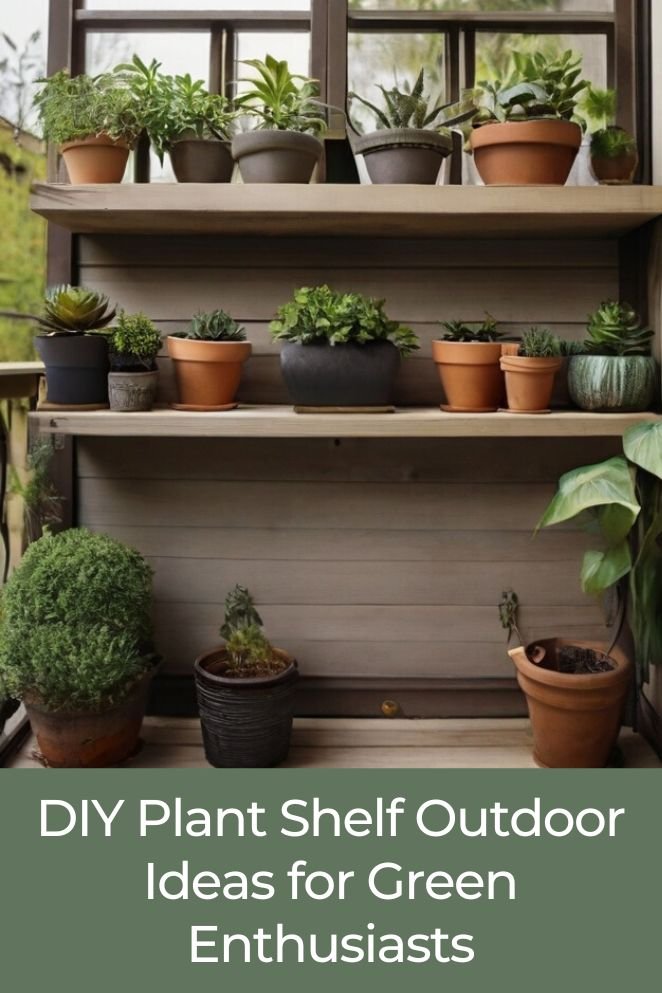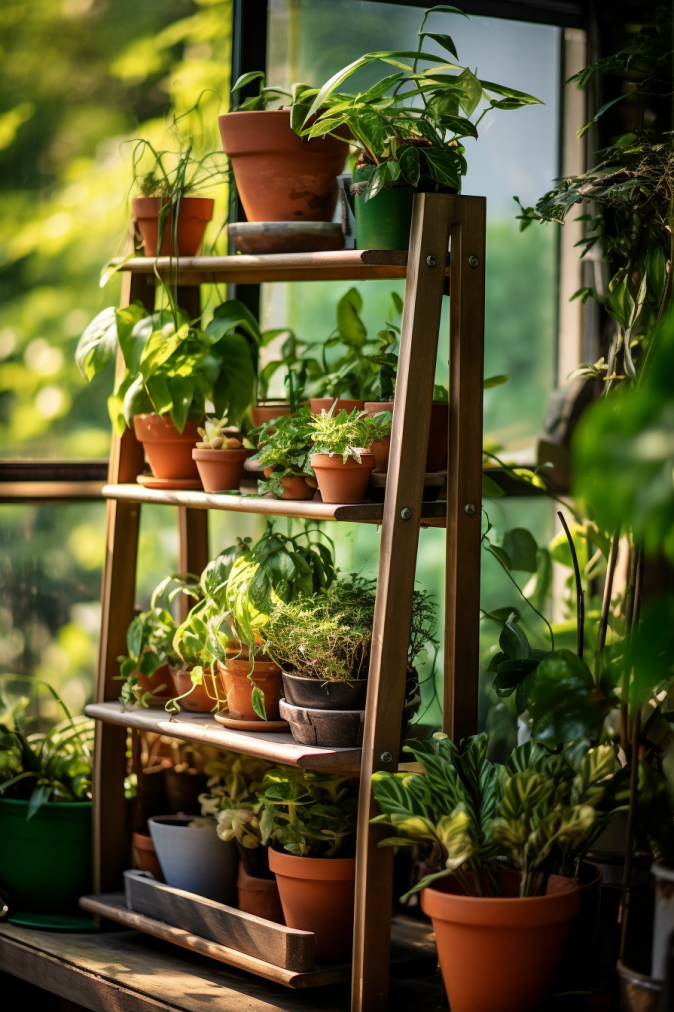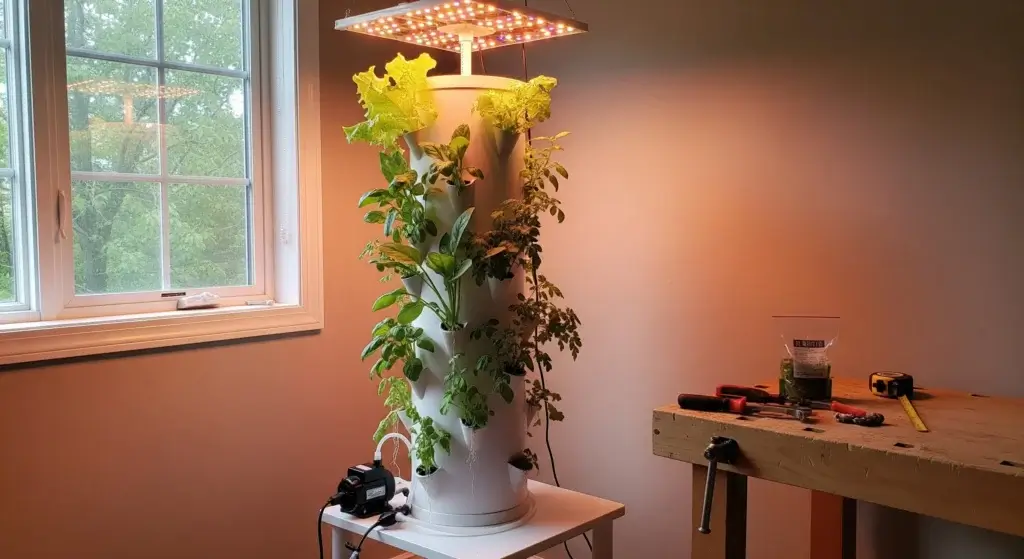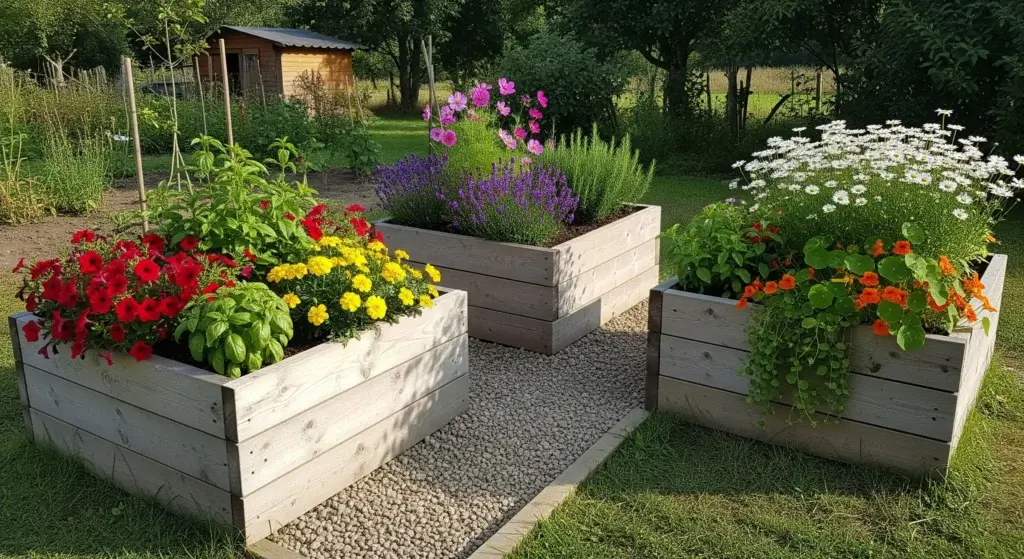
Enhancing your outdoor space with a touch of greenery is easy with a DIY plant shelf.
It serves as an excellent platform to showcase your plants, creating a visually appealing display.
In this blog post, we’ll explore the advantages of DIY outdoor plant shelves, outline the necessary materials and tools, and provide clear step-by-step instructions for constructing your personalized plant shelf.
Why DIY Outdoor Plant Shelves?
Opting for DIY outdoor plant shelves presents an excellent opportunity to infuse your outdoor space with personality and style.
These shelves can be tailored to meet your specific needs and preferences, offering a customized touch.
Moreover, they tend to be more budget-friendly compared to pre-made alternatives.
Engaging in the construction of your plant shelf is not just a practical choice but also a delightful and rewarding DIY project, allowing you to unleash your creativity.
- Read also: DIY Plant Hanger with Yarn
- Read also: Crafting DIY Plant Hangers with Rope
What Are The Benefits of Having Outdoor Plant Shelves

Having outdoor plant shelves can offer numerous benefits for your outdoor space. Here are some of the benefits of having outdoor plant shelves:
Maximizes space
Outdoor plant shelves provide an organized and space-efficient way to arrange your plants.
By utilizing vertical space, you can maximize the use of your outdoor area, making it both functional and visually appealing.
Creates a focal point
These shelves serve as an excellent means to make your plants the focal point of your outdoor space.
By arranging them thoughtfully, you can craft a captivating and inviting atmosphere, enhancing the overall aesthetic of your outdoor environment.
Provides visibility
Outdoor plant shelves offer visibility, especially beneficial for smaller plants that might go unnoticed on the ground.
Elevating your plants allows them to be seen and appreciated, contributing to the overall beauty of your outdoor setting.
Adds aesthetic appeal
Adding a touch of aesthetic appeal, outdoor plant shelves contribute to a stylish and fresh look for your outdoor space.
You can choose designs that complement your overall outdoor décor, creating a harmonious and attractive atmosphere.
Saves money
Cost-effectiveness is a notable advantage.
Outdoor plant shelves enable you to showcase multiple plants using a single stand, eliminating the need to purchase individual flower pots.
This can result in significant savings while still achieving an impressive display.
Easy to move
The lightweight nature of outdoor plant shelves makes them easy to move.
This flexibility allows you to rearrange your plants according to your preferences or as seasonal changes dictate, ensuring a dynamic and evolving outdoor space.
Improves air circulation
Elevating plants on outdoor shelves enhances air circulation around them.
Improved airflow contributes to the overall health of your plants, promoting optimal conditions for growth and vitality.
Prevents plant dehydration
Outdoor plant shelves can help prevent plant dehydration by allowing water to pass through and be reused.
This design minimizes water wastage and reduces the time and effort spent on watering your plants, contributing to their overall well-being.

DIY Outdoor Plant Shelf Materials & Cut List
Before you get started, you’ll need to gather the necessary materials and tools. Here’s what you’ll need:
Wood Board Cut List
- 2×4 boards (4): 30 inches
- 1×4 boards (4): 30 inches
- 1×2 boards (4): 30 inches
- 1×6 boards (2): 30 inches
Tools
- Saw
- Drill
- Screws
- Measuring tape
- Pencil
DIY Outdoor Plant Shelf Step-by-Step Instructions
Step 1: Cut the wood boards
Using a saw, carefully cut the wood boards to the appropriate lengths.
The dimensions will depend on the size of the outdoor plant shelf you desire.
Ensure precision in your measurements to guarantee a sturdy and well-proportioned shelf.
Step 2: Assemble the frame
Assemble the frame by attaching the 2×4 boards to the 1×4 boards using screws.
This forms the structural foundation of your plant shelf.
Ensure the corners are square, and the boards are securely connected to provide stability.
Step 3: Attach shelf supports
Attach the 1×2 boards to the frame to create the shelf supports.
These supports will provide additional strength and ensure the shelves can bear the weight of your plants without sagging.
Secure them evenly along the frame for balanced support.
Step 4: Create the shelves
Attach the 1×6 boards to the top of the frame, evenly spacing them to form the shelves.
These boards will serve as the surfaces for placing your potted plants.
Ensure they are securely fastened to the frame for stability.
Step 5: Sand the edges and surfaces
To achieve a smooth and polished finish, use sandpaper to sand the edges and surfaces of the plant shelf.
This step helps eliminate any rough spots or uneven surfaces, providing a more comfortable and visually appealing result.
Step 6: Paint or stain the shelf
Enhance the appearance of your outdoor plant shelf by painting or staining it according to your preferences.
Choose a finish that complements your outdoor decor.
Apply the paint or stain evenly using brushes or applicators, covering all surfaces for a cohesive look.

Step 7: Allow the shelf to dry completely
Once painted or stained, allow the outdoor plant shelf to dry completely before adding your plants.
This ensures that the finish sets properly and prevents any damage to your plants or the shelf itself.
- Read also: DIY Plant Stand Outdoor Ideas
- Read also: DIY Plant Stands Indoor for Every Style
Conclusion
Transforming your outdoor space with DIY plant shelves is an excellent way to infuse it with both greenery and a personal touch.
This guide provides easy-to-follow steps, coupled with the right materials and tools, empowering you to craft a stylish and practical plant shelf.
The end result?
A beautiful showcase for your plants, elevating your outdoor decor to new heights.
Follow along to create a space that reflects your personality and a vibrant haven for your favorite plants.
FAQs
Yes, you can use different materials depending on your preferences and needs. However, it’s important to ensure that the materials you choose are suitable for outdoor use and can withstand exposure to the elements.
The number of shelves you include in your plant shelf will depend on the size of your space and the number of plants you want to display. You can customize the number and size of the shelves to fit your specific needs.
No, you don’t need to be an experienced DIYer to build a plant shelf. However, it’s important to follow the instructions carefully and use the appropriate tools and materials to ensure a safe and successful project.



